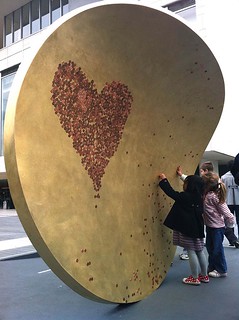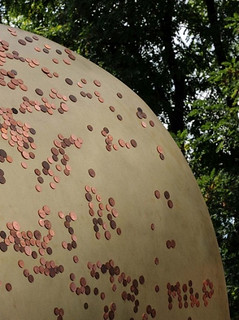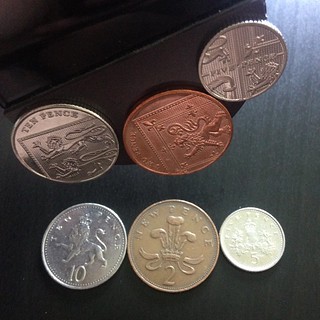
PREV ARTICLE
NEXT ARTICLE
FULL ISSUE
PREV FULL ISSUE
WHY ARE SOME UK COINS MAGNETIC?
Nick Graver forwarded this interesting Royal Mint blog article on why some UK coins are magnetic. Thanks.
-Editor
If you were to take a magnet to the ‘smaller’ coins in your change today, you will find that some of them stick. What, I suppose, is interesting about this is that only some of the coins are magnetic… Why aren’t all of them? A quick Google search will uncover the official explanation, which can be found on both royalmint.com and the Royal Mint Museum’s website. In short, the composition of 1p and 2p coins was changed from bronze to copper-plated steel in 1992 and the composition of 5p and 10p coins was changed from cupro-nickel to nickel-plated steel in 2011. The common denominator? Steel. The ‘Copper’ 1p and 2p coins were traditionally made from a bronze alloy of copper, tin and zinc. However, since September 1992 they have been made from copper-plated steel. Both types are the same colour, weight, diameter and design and circulate together, but it’s the new copper-plated steel coins that are attracted to magnets. The iron content in the steel core is what makes them magnetic. Since January 2012, the ‘Silver’ 5p and 10p coins have also been made from a plated steel, in turn making them magnetic. While they changed more recently than the ‘coppers’, you will actually find that a higher percentage of 5p and 10p coins are magnetic. This is because in 2013 The Royal Mint began a programme to recover old 5p and 10p coins from circulation. Since then some 330 million of the new plated steel coins have been issued in their place. As people have discovered the magnetic property of the coins in their change, many have tried experimenting to see how far they can push the boundaries of what can be done with them.


This sculpture called ‘Drop’ by Paul Cocksedge, created in 2010, is magnetic and encouraged passers-by to attach their unwanted pennies to its surface in aid of charity.
Great idea! Neat sculpture. So which U.S. coins are attracted to magnets? Only the ones on 1943 steel cent planchets? Any patterns?
-Editor
To read the complete article, see:
The Numismatic Bibliomania Society is a non-profit organization promoting numismatic literature. See our web site at coinbooks.org. To submit items for publication in The E-Sylum, write to the Editor at this address: whomren@gmail.com To subscribe go to: https://my.binhost.com/lists/listinfo/esylum All Rights Reserved. NBS Home Page Contact the NBS webmaster 
|
